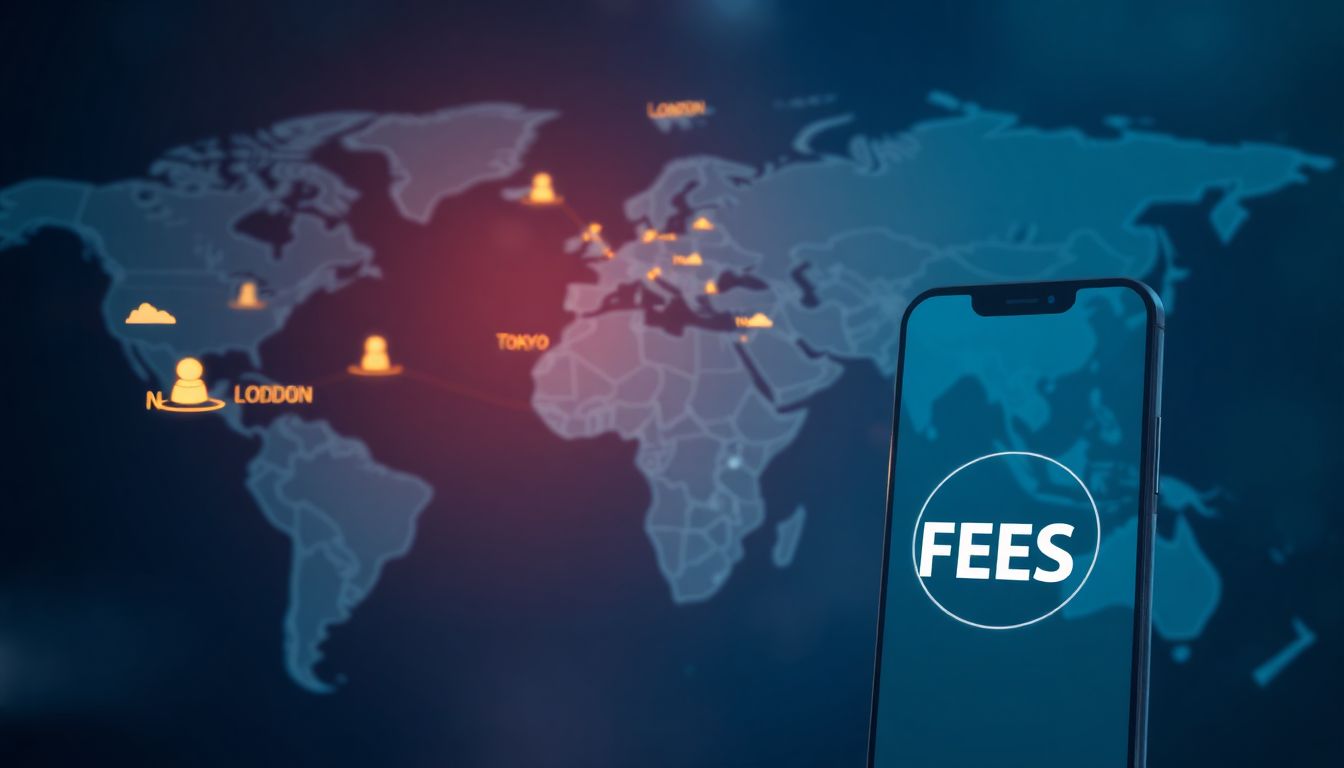
No-Fee Banking: Top Accounts for Seamless International Transfers
Tired of high fees eating away at your hard-earned money when sending it abroad? International transfers can be a real pain, costing you a fortune in fees. It feels like every bank wants a cut. There's good news! "No-fee" banking might be the answer to those expensive international transactions.
This article dives into the world of no-fee banking. We’ll explore how it can benefit you. We'll identify the best accounts for international transfers. You'll learn to keep more money in your pocket.
Understanding No-Fee Banking and International Transfers
"No-fee" banking isn't always what it seems. It's crucial to understand what it really means. When it comes to international transfers, watch out for hidden costs. Let's break down the details, so you know what to expect.
What Does "No-Fee" Really Mean?
"No-fee" often means no upfront transfer fees or monthly maintenance fees. Banks sometimes hide charges in exchange rates. You might also encounter third-party fees. Always read the fine print to know the complete picture.
The True Cost of International Transfers
Sending money internationally can involve several costs. These might include transfer fees charged by your bank. Another one is the exchange rate markups which is a cut that the bank makes by marking up the rate, as well as intermediary bank charges. These are fees from banks that process the transfer. All these fees add up quickly.
Who Benefits Most from No-Fee International Transfers?
Several groups find "no-fee" international transfers incredibly helpful. Expats who regularly send money home benefit a lot. Freelancers get paid by international clients. International businesses that move funds across borders can also benefit. Students studying abroad and immigrants supporting families also find these accounts useful.
Key Features to Look for in a No-Fee International Transfer Account
Choosing the right account requires careful consideration. Focus on essential features. These features will help you maximize your savings.
Favorable Exchange Rates
Competitive exchange rates are vital. Compare rates from different providers. A slightly better rate can save you a lot. For instance, on a $1,000 transfer, a 0.5% better rate saves you $5.
Transparent Fee Structure
Clarity on fees is super important. Understand all potential charges. Watch out for third-party fees. Ensure there are no hidden costs.
Transfer Speed and Reliability
Fast and reliable transfers matter. Some providers are quicker than others. Check typical transfer times. Some services can take days. Others might only take minutes.
Security and Regulation
Always choose a regulated provider. Check for security measures. Your funds should be safe. Look for established, reputable companies.
Top No-Fee Banking Accounts for International Transfers: A Detailed Comparison
Here are some top "no-fee" banking accounts. These are great for international transfers. We'll compare their features.
Account Option 1: Wise (formerly TransferWise)
Wise is known for its transparent fees and mid-market exchange rates. It offers multi-currency accounts. Benefits include low fees and fast transfers. A drawback is that there may be limits on large transfers. Wise supports many currencies. The user experience is generally positive.
Account Option 2: Revolut
Revolut provides a range of financial services. These include currency exchange and international transfers. It offers various account tiers. The higher tiers provide better exchange rates. Drawbacks include weekend fees and potential limits. It supports many currencies and has a user-friendly app.
Account Option 3: Charles Schwab High Yield Investor Checking Account
Schwab offers a checking account with no monthly fees. It also has no foreign transaction fees. Benefits include access to investment options. A drawback is that exchange rates might not be the best. It is great for those who want both banking and investment services. The user experience is generally good.
How to Choose the Right No-Fee Account for Your Needs
Selecting the right account depends on your needs. Consider factors like transfer frequency. Evaluate account features.
Assess Your Transfer Needs
How often do you transfer money? What's the average amount? Where do you send money? Which currencies do you use? Answering these questions helps narrow your choices.
Compare Features and Fees
Create a checklist. Compare accounts side-by-side. Look at exchange rates, fees, and transfer speeds. See which aligns with your needs.
Read User Reviews and Testimonials
Check what other users say. Look at online reviews. See what their experience has been. This provides real-world insights.
Tips for Maximizing Savings on International Transfers
Want to save even more? Follow these tips. These simple strategies can lower costs.
Avoid Weekend Transfers
Exchange rates can be less favorable on weekends. Banks often widen their margins. If possible, transfer during the week.
Be Aware of Cut-Off Times
Cut-off times affect transfer speeds. Transfers after the cut-off might not process until the next business day. Plan your transfers accordingly.
Consider Using a Multi-Currency Account
Holding multiple currencies can save you money. Avoid conversion fees by paying directly in the local currency. This is super useful if you regularly deal with different currencies.
Conclusion
"No-fee" banking can significantly reduce costs. It is especially helpful for international transfers. The trick is to choose the right account. Think about your personal needs. Explore the options. Start saving today!






0 Comments